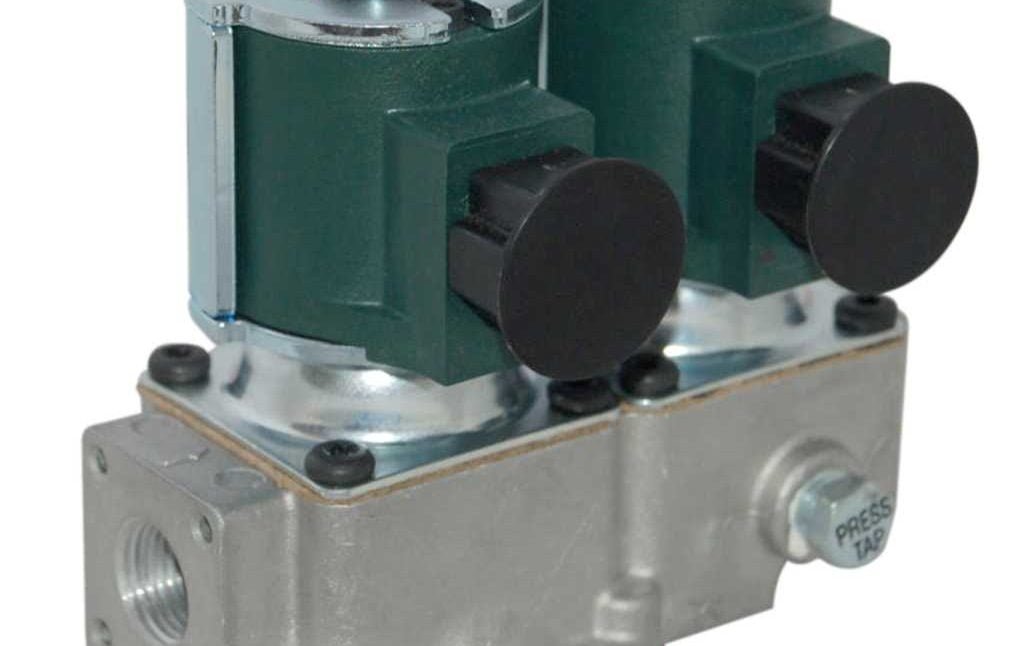What Is a Redundant Gas Valve? A redundant gas valve is a type of valve that contains two or more valves working together to control the flow and pressure of gas to your furnace’s burner. The purpose of this valve is to provide additional safety and reliability for your heating system. It can help prevent gas leaks, explosions, or fires in a valve failure. Regarding furnace safety, a redundant gas valve is essential in ensuring secure and dependable operation.
This post will describe a redundant gas valve, its functions, benefits, and how to install and maintain it. After reading this post, you will better understand the importance of a redundant gas valve for your furnace.
How Does a Redundant Gas Valve Work?
A redundant gas valve works by connecting two or more valves in series or parallel. The valves can be either identical or different, depending on the type and model of the redundant gas valve. You can also view our detailed guide on Gas Valves vs Water Valves.
The valves in a gas system serve various functions, including:
- Shutting off the gas supply in case of an emergency or malfunction.
- Regulating the gas pressure and flow to match the demand and capacity of the system.
- Mixing gas with air or oxygen to create proper combustion.
- Modulating the gas flow to adjust the temperature and flame size.
The valves can also have different modes of operation, such as:
Manual: The valves can be manually operated using a switch, knob, button, or thermostat.
Automatic: The valves can be automatically operated by sensors, solenoids, motors, or thermocouples.
The valves can also have different power sources, such as:
- Electricity: The valves can be powered by electricity from the main power supply or a battery.
- Gas: The valves can be powered by either gas from the main supply or a pilot light.
- Thermocouple: A thermocouple can power the valves, which generates electricity from the flame’s heat.
Don’t forget to read more about Troubleshooting 4 Blinks on Furnace
A redundant gas valve ensures safe and efficient gas flow by arranging multiple valves to take over if one fails. It guarantees optimal performance and user comfort.
What Are the Benefits of Having a Redundant Gas Valve?
Having a redundant gas valve can offer numerous benefits, such as:
- Safety: A redundant gas valve is a vital safety feature that prevents serious hazards like gas leaks, explosions, fires, and carbon monoxide poisoning. It shuts off the gas supply in case of emergencies or malfunctions, preventing gas from escaping or igniting. Additionally, it ensures complete combustion of gas, avoiding the formation of carbon monoxide.
- Efficiency: A redundant gas valve can improve heating system efficiency and lower energy bills by regulating gas pressure and flow. It can also adjust temperature and flame size to prevent overheating or underheating. It’s an intelligent investment for sustainability and functionality.
You can also learn more about Gravity Furnace vs Forced Air
- Comfort and convenience: A redundant gas valve provides consistent and even heat by mixing gas with air or oxygen for clean and stable combustion. It also adjusts temperature and flame size, creating a cozy atmosphere for user comfort.
How do you install and maintain a redundant gas valve?
Installing and maintaining a redundant gas valve is a crucial task that can be dangerous if not handled correctly. Hire a professional furnace technician to ensure the safety and accuracy of the installation and minimize the risks to your family and property.
The cost can vary depending on the furnace and gas valve, ranging from $200 to $1,000. Before installation, confirm compatibility and obtain necessary permits and inspections from local authorities. This will ensure that the building meets the required safety standards and regulations.
Investing in professional installation and maintenance of a redundant gas valve can save you money and time. Most importantly, it protects your family and property.
To install and maintain a redundant gas valve, follow these steps:
- Turn off the gas supply to the furnace and disconnect the power cord.
- Locate the existing gas valve and remove the wires and gas lines connecting it to the furnace. You may need to use a screwdriver or a wrench to do this.
- Install the new redundant gas valve and connect the wires and gas line to the furnace, following the manufacturer’s or technician’s instructions.
- Reconnect the power cord and turn on the gas supply to the furnace.
- To test the redundant gas valve, turn on the furnace and check the gas flow, pressure, temperature, and flame size. Use a gas leak detector or soapy water solution to double-check. If successful, the valve is installed correctly. Contact a technician if you need help.
What Is a Redundant Gas Valve – Conclusion
In conclusion, what is a redundant gas valve? A redundant gas valve is an essential safety feature that provides numerous benefits, such as enhanced safety, efficiency, and user comfort. This valve, consisting of two or more working together, prevents gas leaks, optimizes combustion, and reduces the risk of furnace malfunctions. It is crucial to have the valve installed by a professional furnace technician to ensure compliance with safety regulations. Investing in a redundant gas valve pays off with improved efficiency, lower energy bills, and long-term comfort. Prioritizing professional installation and regular maintenance can help safeguard your family and property from potential hazards.





